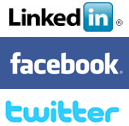“To be or not to be . . .”
“To DO, or NOT to do . . .”
I got a “dressing down” the other day when I asked a question on various social media platforms.
This was my message:
“ARE PRESS RELEASES DEAD? I would like to publish an article on my blog,”
I received many relevant opinions and this surprising response:
“Don’t use my wall to promote your blog.”
Had I missed a rule?
Honestly, I was quite taken aback. What on earth had I done that was WRONG?
So I looked to the ‘wisdom of the crowd” and asked a few of my social media friends — many of whom had received and responded to my question: “What rules had I violated?”
Most said that they hadn’t been offended in any way, but one suggested that some people can get very “persnickety” about their Facebook profile — and that if I really wanted the Scoop on “Doing the Right Thing,” I should ask Etiquette Expert George Kao, a social media coach whose webinar I had attended and written about a month ago: The Circle of Reciprocity begins with Free.
“People are forgiving of your social media mistakes — if you don’t keep repeating them. Someone will usually let you know if you’ve done anything wrong.” — George Kao
George suggested to me that people should not be afraid of making mistakes. “The social web is so new, that the rules for etiquette may not be obvious,” he said. If in doubt, take action, he suggested.
“Focus on adding value to people’s lives and business.”
If you want to do the Right Thing online, then think of the Golden Rule: “Do Not do unto others as you would not have them do unto you.” AND “Do onto others as you would have them do onto you.”
Here are some of George’s suggestions:
- Give others the experience you would want.
- Be aware of actions that would be intrusive [like over promotion].
- Build “Social Capital” [i.e. authentic relationships] before you spend it.
- Duplicate the types of online actions that you like AND don’t do the ones you don’t like.
- Be “Open Hearted.” We tend to be open-hearted with those who are open-hearted with us.
Facebook Walls: What to post and what not to post
Many people seem to be confused about Facebook Walls, George agreed. “Think of the Wall as someone’s Front Porch or a public office space,” he said. “Your Wall is where you post messages for all visitors. Your updates go on your wall,” he explained.
When someone clicks through to another person’s Facebook profile and writes on that person’s wall, it should be about that person — like a birthday greeting or an endorsement. The only people who see that Wall message, however, will be the Facebook friend and any mutual friends, according to George.
When you comment on one of your friend’s updates, it’s visible by all the person’s Facebook friends as well, so be aware of that.
“Everyone has a responsibility to manage his or her own Wall. If someone writes something you don’t like, you can remove it — and you ought to.”
George’s final caution: “When you are communicating and updating on Facebook, make certain that you don’t post anything you wouldn’t want the world to see.”
Do you have any online pet peeves that you’d like to share — or resources for rules? We’d love to know them and help spread the word.




